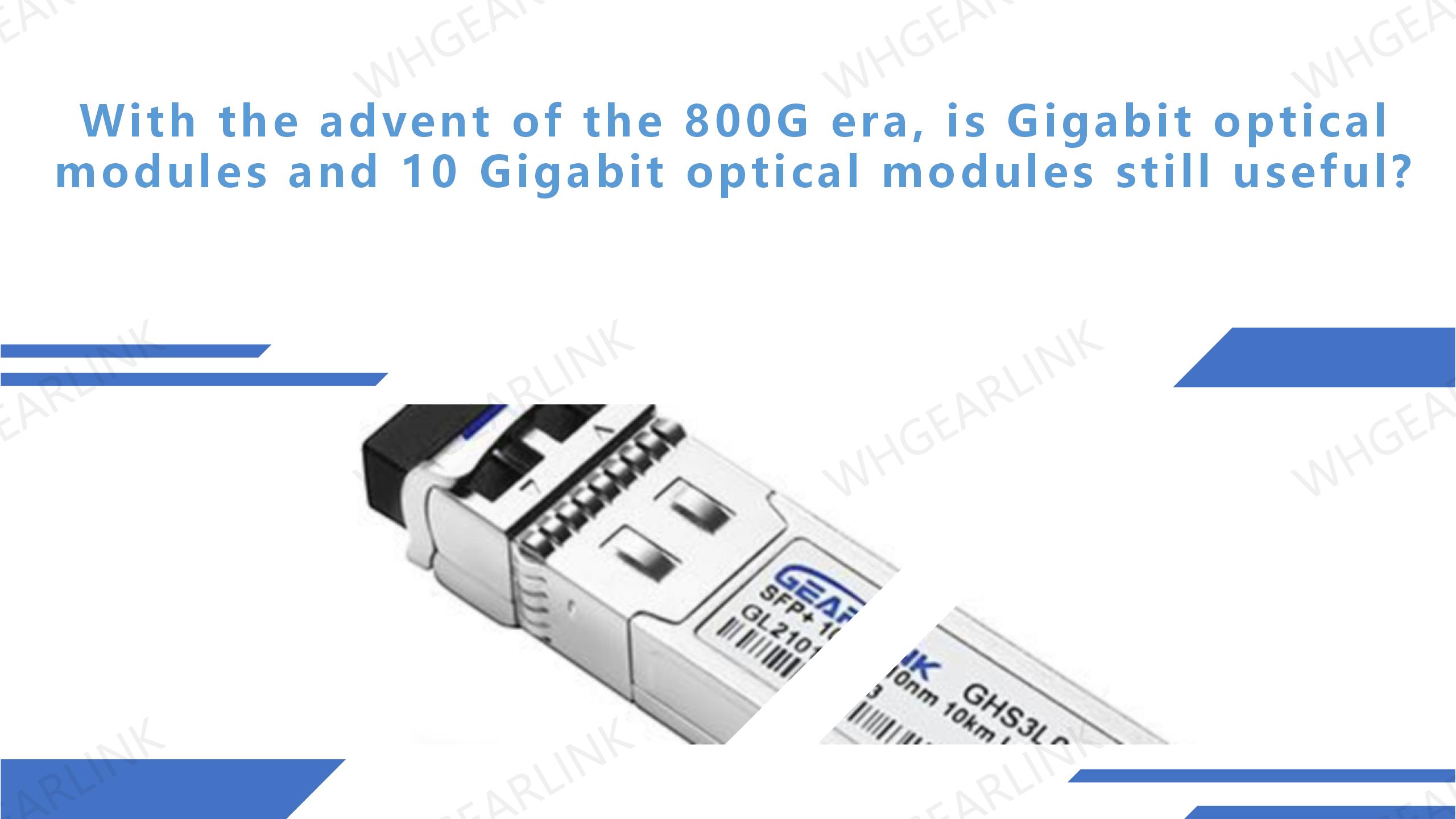With the continuous advancement of technology, the 800G era has come, and whether Gigabit optical transceivers and 10 Gigabit optical transceivers are still useful has become a hot topic. This article will analyze the advantages and disadvantages of Gigabit optical transceivers and 10 Gigabit optical transceivers from two perspectives of technology and market, as well as their application prospects in the 800G era.
With the continuous advancement of technology, the demand for network transmission speed is getting higher and higher, especially in the fields of cloud computing, artificial intelligence, Internet of Things, etc., the requirements for network transmission speed are getting higher and higher. In recent years, Gigabit optical transceivers and 10 Gigabit optical transceivers have become the main means of network transmission, but with the advent of the 800G era, whether Gigabit optical transceivers and 10 Gigabit optical transceivers are still useful has become a hot topic. This article will analyze the advantages and disadvantages of Gigabit optical transceivers and 10 Gigabit optical transceivers from two perspectives of technology and market, as well as their application prospects in the 800G era.
Gigabit optical transceiver
Gigabit optical transceivers are currently one of the most widely used optical transceivers, with a transmission rate of 1.25Gbps, suitable for most enterprise networks and data centers. Gigabit optical transceivers usually use a transmission rate of 1.25Gbps and are packaged in SFP, with transmission distances ranging from 550m-120km. Compared with other optical transceivers, gigabit optical transceivers are low in price and low in power consumption, making them very suitable for small and medium-sized enterprises.
10 Gigabit optical transceiver
The 10G optical transceiver is a high-speed optical transceiver, and its transmission rate can reach 10Gbps, which is 10 times that of the Gigabit optical transceiver. The 10 Gigabit optical transceiver is more commonly packaged in SFP+, and the transmission distance ranges from 300m to 80km. 10G optical transceivers are widely used in high-speed transmission scenarios such as data centers and enterprise networks, but the price and power consumption are slightly higher than those of Gigabit optical transceivers. The power consumption of Gigabit optical transceivers is below 1W. The power consumption is usually between 1-1.5W. As the transmission distance increases, the power consumption will increase slightly.
800G optical transceiver
The 800G optical transceiver is one of the most advanced optical transceivers at present, and its transmission rate can reach 800Gbps. At present, the product system adopted by the 800G optical transceiver is still being rapidly improved. Currently, it can achieve 2km transmission, which can fully meet the internal transmission requirements of the data center. As the most advanced optical transceiver nowadays, the price of 800G optical transceiver is still relatively expensive at present, and the power consumption is about 16W.
Gigabit optical transceivers, 10 Gigabit optical transceivers and 800G optical transceivers have their own advantages. Gigabit optical transceivers are suitable for Gigabit Ethernet, small and medium-sized enterprises and low-speed transmission scenarios, and the price is low; 10 Gigabit optical transceivers are suitable for high-speed transmission scenarios such as 10 Gigabit Ethernet and enterprise networks, and the cost performance is very high; 800G optical transceivers are used for large data centers, etc. For high-speed transmission scenarios, the price and cost are relatively high at present.
Gigabit optical transceiver market
Gigabit optical transceivers have a large market demand and low prices, and are suitable for transmission scenarios of small and medium-sized enterprises. With the continuous advancement of technology, the transmission rate of gigabit optical transceivers can no longer meet the needs of some high-speed transmission scenarios, but it is still widely used in small and medium-sized enterprises and low-speed transmission scenarios, such as data transmission, synchronous interconnection, and media conversion.
10 Gigabit optical transceiver market
10 Gigabit optical transceivers can connect servers and storage devices with network equipment to support large-scale data center applications. 10 Gigabit optical transceivers are very cost-effective, and are still widely used in high-speed transmission scenarios such as data centers and enterprise networks.
800G optical transceiver market
The market demand for 800G optical transceivers is relatively small, and the price and cost are high, which is suitable for ultra-high-speed transmission scenarios. With the continuous advancement of science and technology, the application prospects of 800G optical transceivers are very broad, especially in the fields of cloud computing, artificial intelligence, Internet of Things, etc., 800G optical transceivers will have wider applications.
To sum up, Gigabit optical transceivers, 10 Gigabit optical transceivers and 800G optical transceivers have their own characteristics and market demands: Gigabit optical transceivers are suitable for Gigabit Ethernet and SME transmission scenarios, and 10 Gigabit optical transceivers are suitable for 10,000 Gigabit Ethernet and enterprise network transmission scenarios, while 800G optical transceivers are suitable for large data centers, cloud computing, artificial intelligence and other fields. With the continuous advancement of technology, the demand for network transmission speed is also increasing. Even so, Gigabit optical transceivers and 10 Gigabit optical transceivers still have a wide range of demands, which are sufficient to meet our daily network needs. With the advent of the ultra-high-speed era, gigabit and ten gigabit optical transceivers may eventually be replaced, but due to various reasons such as technology and cost, replacement will also be a long process.


